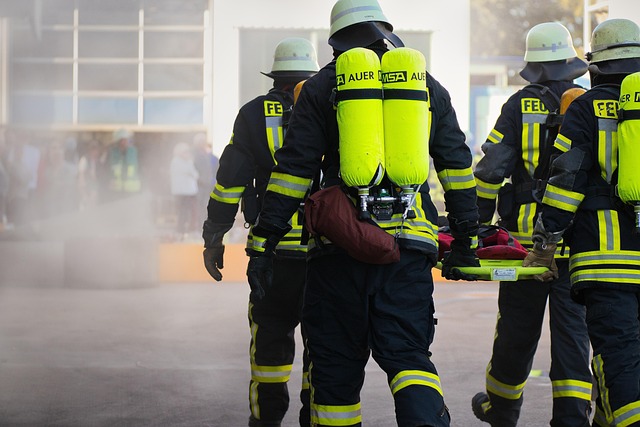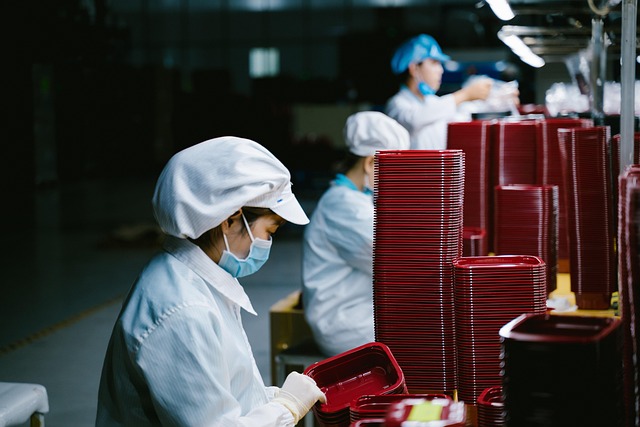The 5S methodology, rooted in lean management, transforms industrial workspaces through sorting, organizing, cleaning, standardizing, and sustaining. This system enhances efficiency, safety, and productivity by streamlining workflows, reducing waste, and fostering continuous improvement through process standardization, leading to improved product quality and employee morale.
“Unleash the power of efficient industrial housekeeping with a proven system—the 5S methodology. This article explores how this transformative approach, rooted in lean management principles, can revolutionize workplace organization. We’ll guide you through each step, from understanding the core 5S concepts to implementing continuous improvement and standardization processes. Discover real-world applications that have transformed bustling industrial spaces, enhancing productivity and quality. Dive into this comprehensive guide for a successful 5S training journey.”
- Understanding the 5S Methodology: A Foundation for Efficiency
- Lean Management Principles: Enhancing Workplace Flow
- Organizing for Success: Tools and Techniques
- Continuous Improvement: The 5S Journey Beyond Initial Setup
- Standardization Processes: Ensuring Consistency and Quality
- Real-World Applications: Transforming Industrial Spaces
Understanding the 5S Methodology: A Foundation for Efficiency

The 5S methodology is a powerful tool for enhancing workplace organization and efficiency. It’s a core principle within lean management, focusing on creating a tidy, standardized, and efficient work environment through a systematic process known as continuous improvement. Each ‘S’ in 5S stands for a crucial step: Sort, Set in Order, Shine (Clean), Standardize, and Sustain.
This method encourages workers to continually assess their workspace, removing unnecessary items (Sort) and organizing the remaining tools and equipment for easy accessibility (Set in Order). Regular cleaning and maintenance (Shine) ensure a safe, visually appealing environment. Standardization, the final step, involves establishing clear processes and guidelines that promote consistent practices across the board. By adhering to 5S training principles, organizations can achieve process standardization, leading to improved productivity and overall workplace satisfaction.
Lean Management Principles: Enhancing Workplace Flow

Lean Management principles are integral to optimizing industrial housekeeping and enhancing workplace flow. The core tenets of Lean, such as process standardization and continuous improvement, are closely aligned with the 5S training methodology. By implementing 5S—Sort, Set in Order, Shine (cleanliness), Standardize, Sustain—organizations can achieve a highly organized and efficient workspace. This involves systematically organizing tools and equipment, eliminating waste, and establishing consistent cleaning routines.
The integration of lean management further streamlines operations by promoting just-in-time inventory, minimizing non-value-added activities, and fostering a culture of continuous improvement. Regular 5S audits and ongoing training reinforce these principles, ensuring that the workplace remains optimized for productivity and safety. Process standardization, a key aspect of Lean, becomes second nature as employees learn to recognize and eliminate inefficiencies, contributing to a smoother workflow and overall enhanced workplace organization.
Organizing for Success: Tools and Techniques

Organizing a workspace for maximum efficiency is the cornerstone of any successful industrial housekeeping strategy. The 5S training method—an established lean management technique—is a powerful tool to achieve this. It involves sorting, setting in order, shining (cleaning), standardizing, and sustaining, creating an organized, disciplined environment. By implementing 5S continuous improvement practices, companies can ensure every area of the workplace is optimized for productivity, safety, and quality control.
Effective tools and techniques within 5S include color-coding systems for easy identification, clear labeling of storage areas, and efficient inventory management. Process standardization plays a pivotal role in maintaining order, as it ensures that tasks are completed consistently, minimizing errors and maximizing output. This structured approach not only enhances operational efficiency but also fosters a culture of continuous improvement, where every employee contributes to the overall success and safety of the workplace.
Continuous Improvement: The 5S Journey Beyond Initial Setup

After the initial setup of 5S, the true power of this method lies in its ability to facilitate continuous improvement within a workplace. This ongoing journey involves regular reviews and adjustments, ensuring that the standardisation achieved through 5S training remains robust. By adopting lean management principles, organizations can identify inefficiencies and waste, streamlining processes for enhanced productivity.
The 5S framework provides a structured approach to organize the workplace, but it’s the continuous improvement mindset that keeps it relevant. Regular 5S audits and employee involvement in process standardization create an environment of ownership and accountability. This proactive culture allows for the seamless integration of new ideas and technologies, ensuring the organization remains agile and competitive in a dynamic market.
Standardization Processes: Ensuring Consistency and Quality

Standardization processes play a pivotal role in industrial housekeeping by ensuring consistency and quality across various operations. 5S training, rooted in lean management principles, is a powerful tool for workplace organization. This methodology encourages employees to sort, set in order, shine (clean), standardize, and sustain their work areas, leading to an efficient and safe environment.
By implementing 5S continuous improvement practices, companies can streamline workflows, reduce waste, and enhance overall productivity. Process standardization ensures that tasks are executed uniformly, minimizing errors and maximizing efficiency. This, in turn, translates into improved product quality, increased customer satisfaction, and a more engaged workforce.
Real-World Applications: Transforming Industrial Spaces

In real-world applications, implementing industrial housekeeping methods such as 5S training and lean management has transformed various industrial spaces. These approaches go beyond simple cleanliness; they drive workplace organization, enhance efficiency, and promote continuous improvement. By focusing on process standardization, companies can streamline operations, reduce waste, and create safer, more productive environments.
The impact of these practices extends to improved morale among employees who benefit from a cleaner, better-organized work environment. Moreover, 5S continuous improvement methodologies encourage a culture of ongoing optimization, where regular audits and adjustments ensure that industrial spaces remain efficient and effective as operational needs evolve.
The implementation of 5S methodology and lean management principles offers a powerful framework for transforming industrial workspaces. By focusing on understanding, organizing, and continuously improving processes, organizations can achieve exceptional efficiency and quality. This article has explored the various facets of 5S training, from its foundational concepts to real-world applications, demonstrating its effectiveness in enhancing workplace organization and streamlining operations. Embracing process standardization ensures consistency, allowing industrial facilities to maintain high productivity levels over time. Through adopting these practices, businesses can unlock significant benefits, fostering a culture of excellence and setting the stage for sustained success in an ever-evolving industrial landscape.
